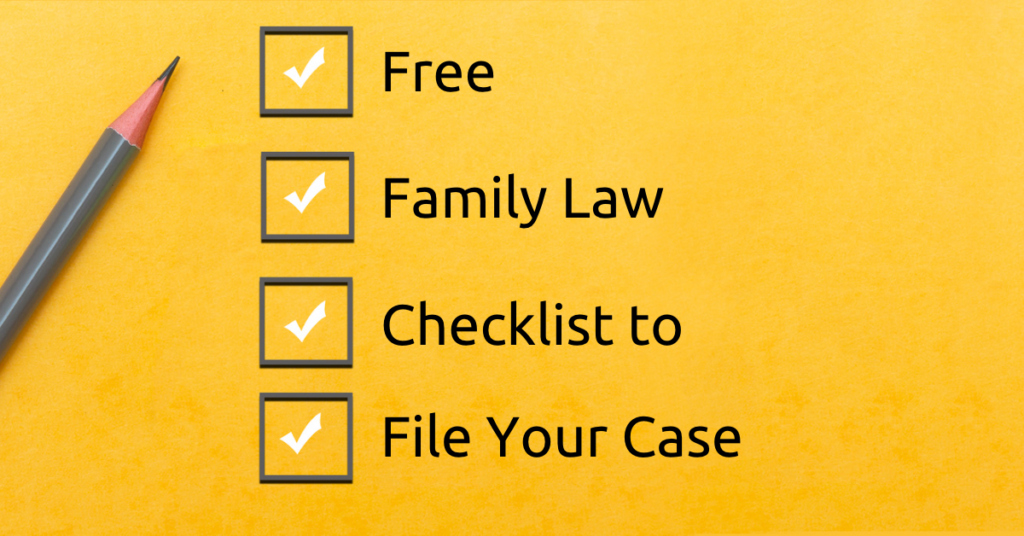I hope you enjoy reading this blog post.
If you want to represent yourself in family law, probate or estate planning court in Arkansas, check out one of our dedicated guides.

Info in this Blog
Getting custody of a child is a major decision and it can be a complicated process. Let’s break it down and explain it as clearly as we can, specifically for people living in the state of Arkansas.
When we talk about ‘custody,’ we mean who gets to make important decisions for the child and who the child will live with. In Arkansas, like many other states, courts look at what’s in the “best interest of the child” when deciding on custody.
If you want to file for child custody in Arkansas, it means you’re asking a judge to determine a custody arrangement and help decide who the child will live with, or who gets to make major choices for them, like their education, religion, and healthcare.
But before you get started, it’s really important to understand that this process can be complex, and it might take some time. You need to complete paperwork, attend court hearings, and possibly work with a lawyer.
And remember, above all, the court’s goal is to protect the child’s wellbeing and happiness. That’s why they look at many factors like the child’s age, each parent’s home environment, the relationship between the child and each parent, and more. It’s not about who the judge likes more, but who will provide the best care for the child.
In the end, we all want what’s best for the child, and that’s what the Arkansas custody process is designed to ensure.
What are the different ways to file for custody in Arkansas?
When filing for custody there are different ways to file depending on what the situation is with the children and the parents. We will discuss the options under Arkansas law and when you need to use them.
Are there different types of custody and visitation?
Yes. There are sole custody, joint custody, standard visitation, and supervised visitation. You can read more about different types of custody and visitation in Arkansas here.
How to Establish Custody when it has never been established before.
Not every custody case is the same. When filing for custody here are different types of custody cases depending on facts. You need to make sure you file the right one: 1) Divorce, 2) Paternity, 3) Modification of Divorce or Paternity, 4) Guardianship of a Minor, and 4) Adoption.
We will talk through each of these and how to use them. Of course if you are filing a new case ($165 filing fee) or reopening a case ($50 filing fee) there is a filing fee.
When to File Divorce for Custody
If you are married to a person, you have minor children together, and you want to get custody of your children, then you need to file a divorce case.
Inside of your divorce case the court will determine child custody and child support.
When to File Paternity for Custody
If you are not married and you have a minor child with someone and you need to determine child custody and child support, then you file a paternity action.
In this situation, it is actually best to file a paternity action to establish child custody and child support while you are getting along. When you are already providing financial support for the child, it can be calculated again how much child support you should pay.
When to File a Motion to Modify Child Custody or Child Support
If there has already been a divorce or paternity case establishing child custody or child support, then you need to file a motion to modify the previous decree.
In this situation you would draft the motion to modify to file in the old case, file all the paperwork with the court clerk in the old court case.
When to File a Guardianship of a Minor Case
If you are not the parent of the minor child and you are trying to obtain custody, then you need to file for a guardianship. Typically, a guardianship is filed by grandparents, aunts, uncles, or other relatives.
That being said, you do not have to be related to file guardianship. But, not people who file for guardianship are. You can read more about guardianships here.
If a Custody Order is already in place, how can I get it changed?

Yes, you can get a custody order changed. First, it’s important to understand that courts aren’t quick to change custody orders. They believe that stability is essential for a child’s well-being. So, to change an existing order, you’ll need to show that there’s been a “material change in circumstances.” This means that something significant has changed in the child’s or parents’ lives that would make the court reconsider the original custody decision.
For example, if one of the parents has moved far away, if a parent’s living situation has changed drastically, if the child or family’s needs have changed, or if the parent with custody isn’t taking good care of the child, these could be considered significant changes.
Once you think you have a valid reason, you’ll need to file a ‘Motion to Modify Custody’ with the court. This is a document where you explain why you think the custody order should be changed.
After filing, there will be a court hearing. Just like the first time around, the judge will look at the situation and decide what is in the best interest of the child.
Remember, the most important thing is what’s best for the child. If you believe that changing the custody order will better serve the child’s needs best interests and wellbeing, it’s worth exploring this process.
Follow these steps to start a custody case
Starting a custody case will alway begin with filing the correct paperwork for the situation. You have make sure all correct documents are filed with the correct court clerk.
Filing custody paperwork begins legal action
After you file the paperwork, you will need to follow court procedures and serve the other parties with the court papers. The other parties will then have 30 days to file their answer with the court clerk.
I say other parties because depending on the type of case, there may be more than one person to serve. If it is custody in a divorce, paternity, or modification then you only need to serve the other parent. The other dispute between the parents will be who gets what parenting time.
If you are filing for custody through a guardianship, then you have the parents as well as any other relatives involved. For example, if you are a grandparent filing for custody you may need to notify your child, the other parent, and anyone else the court deems necessary. Many times in these cases there may be a fight between the grandparents, their kids, the other parent, and the grandparents from the other parent.
The fight may become two fights in one: first, do the parents need to lose custody of the children, 2) if they do, which set of grandparents gets custody?

Free Checklist to Make Sure you Start Your Case Correctly!
Can the child's grandparent file for custody?
Yes. They child’s grandparents can file for custody by filing a guardianship action with the court.
A grandparent might be considered for custody if the parents cannot take care of the child due to reasons like illness, or abuse, addiction, or legal problems. Sometimes, if parents agree that their child living with the grandparent is best, the court may grant custody to the grandparent too.
If I move to a new state, can I transfer my child custody case there?
Moving to a new state can bring up a lot of questions about your child custody case, and one of those questions might be: “Can I transfer my child custody case to my new state?” The answer is, it depends.
First, let’s talk about a law called the Uniform Child Custody Jurisdiction and Enforcement Act (UCCJEA). This is a law that most states, including Arkansas, follow. The UCCJEA helps decide which state has the power to make laws and make decisions about child custody.
Usually, the state where the child has been living for the last six months has what’s called “jurisdiction,” or the power to make decisions about custody. So, if you just moved to a new state, you usually can’t transfer your case right away. You have to wait until your child has lived in the new state for six months.
In which state do I file for custody?
If there is already a custody case or a custody order in one state, you need to file in that state unless no person is left in that state. For example, if mom, dad, and kid live in Texas and a custody order is put in place, then dad moves to Oklahoma and mom and kid move to Arkansas, you can file in Arkansas after 6 months because there is no significant connection left in Texas.
That being said, if dad was still in Texas, then you would need to file in the old custody case in Texas.
There are exceptions, though. For example, if your child is in danger in the current state, the new state might be able to take over the case sooner.
Also, even if your child has lived in the new state for the past six months, the old state might still have control of the case if one parent still lives there.
Moving between states and dealing with child custody can be tricky. If you’re thinking about it, it might be helpful to talk to a lawyer. They can explain the rules and guide you through the process.
Just remember, every step in this journey is about what’s best for your child. Courts always prioritize the child’s wellbeing and happiness above all else.
Do you want to represent yourself in court?

About Brandon
A licensed attorney with over 10 years of experience – I’ve noticed a lack of support for people who want to represent themselves in court.
So, I’ve created video guides that will help you gain back control of some of the least predictable situations you could experience in your lifetime.
Divorce Video Guides
- Intro to Family Law
- Requirements to File Divorce
- Drafting the Complaint
- Court Required Forms
- How, Where, and What to File
- How to Serve or Get a Waiver
- Drafting a Waiver
- Testimony Needed for A Divorce
- Affidavit of Financial Means
- Child Support Calculation
- Drafting the Divorce Decree
- Procedure in the Courtroom
- What to do with the Decree
Do you want to represent yourself in court?
Modifcation Video Guides
- Intro to Family Law
- Requirements to Modify Custody and Support
- Drafting the Motion to Modify
- Court Required Forms
- How, Where, and What to File
- How to Serve or Get a Waiver
- Drafting a Waiver
- Modification Filed Against You
- Child Support Calculation
- Order to Modify
- Procedure in the Courtroom
- What to do with the Decree